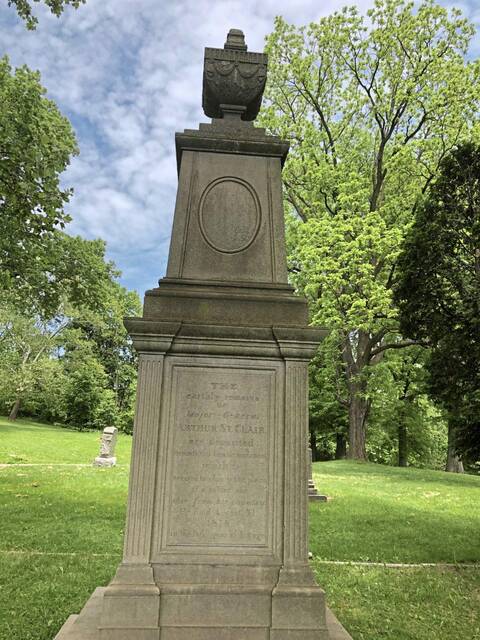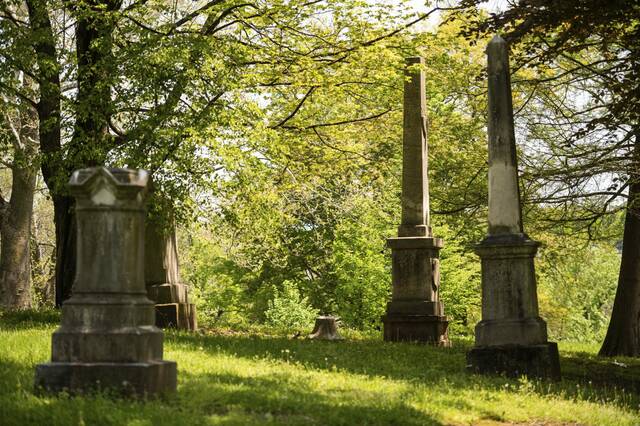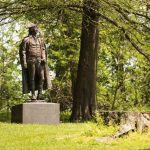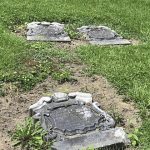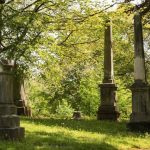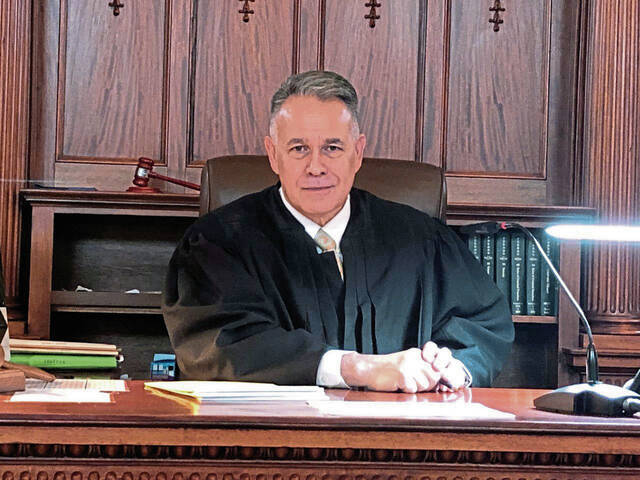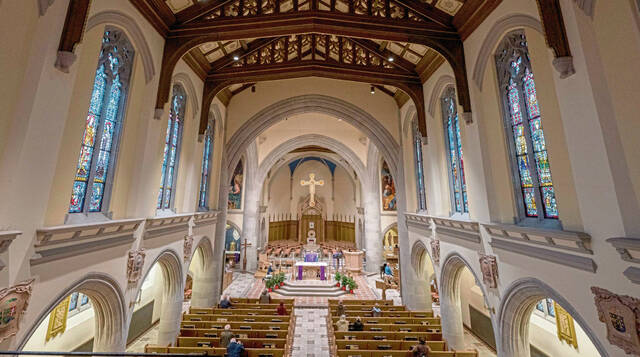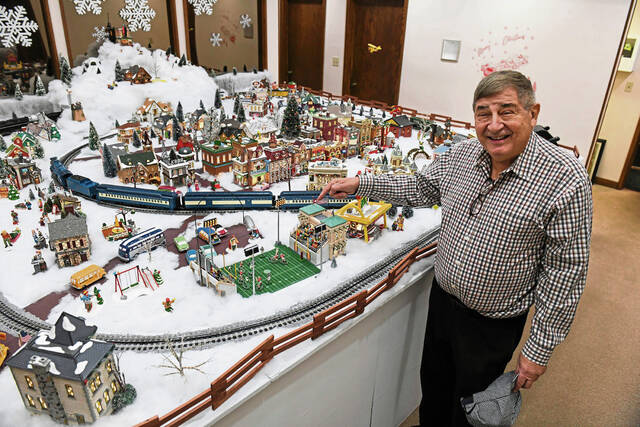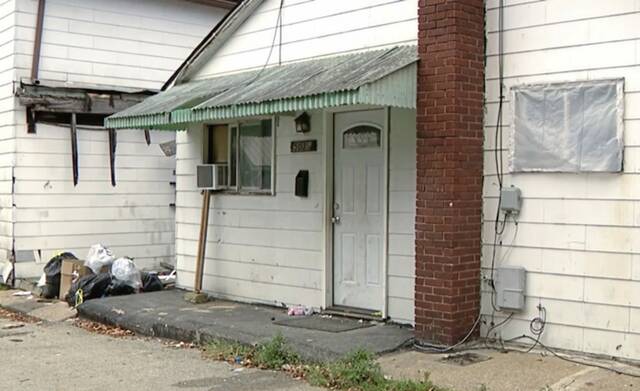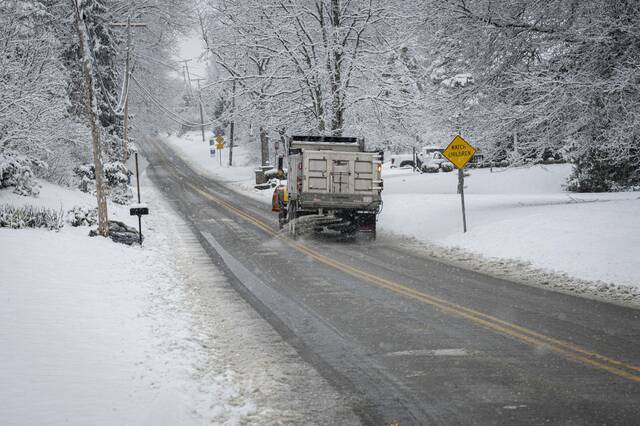St. Clair Park in downtown Greensburg is more than just a recreation hub in the city.
Gravestones and monuments to lives both notable and now anonymous dot the 10-acre park that hosts weekly free concerts during the summer months.
St. Clair Park, deeded to the city in 1808 by landowner William Jack, was one of two town cemeteries until Greensburg leaders banned burial grounds within city limits in 1888.
The park’s history is one of grief and joy, according to Greensburg Councilman Randy Finfrock.
“This was where I grew up and spent hours and hours in that park,” Finfrock said.
“It was a place to grow and a place to meet.”
Finfrock, 71, said his childhood home abutted the park that doubled of a backyard of sorts for him and other children growing up in Greensburg. At one time it featured a baseball field and large playground and a swimming pool.
Today, the park still features a small playground near Arch Avenue, but also a winding walking path, benches and on its Maple Avenue side is home to the Robertshaw Amphitheater that hosts the popular weekly Summer Sounds free concert series.
A reconstructed log cabin built using materials from the original structure that served as a church in 1783, sits just north of the amphitheater.
But the park still serves as a cemetery of sorts. More than a dozen graves and monuments are spread throughout the property, including the burial site of the park’s namesake, Arthur St. Clair.
St. Clair served as a major general during the Revolutionary War, president of the Continental Congress in 1787 and a court justice when Westmoreland County was formed in 1773. He died in 1818.
Most of the those interred at what is now St. Clair Park were moved to other area cemeteries after city law prohibited cemeteries within Greensburg city limits, said Tom Harrold, a local historian and president of the Baltzer Meyer Historical Society in Greensburg.
“There are still remains there,” Harrold said.
The remaining headstones and other grave markers are weathered and difficult to read. Several list dates from the early 1800s. No records exist as to who and how many people remain buried in the park.
“It is sad that that history has left us,” Harrold said.
Workers installing a concrete walking path in the park in the early 2000s unearthed human remains during the excavation portion of the project.
According to a report in the Tribune-Review, a skull was lodged in a wall of dirt about 2 feet from the surface.
A leg bone was uncovered, as well as other unidentified bones. The uphill side of the path also contained what appeared to be pieces of tombstones, parts of which remained embedded in the wall of dirt.
Those remains were re-interred at the park in 2002.
A statue honoring Nathanael Greene, the revolutionary war hero for which the city was named, was erected in St. Clair Park in 1999.
Finfrock said the park remains a centerpiece of city life and was re-energized by the free concerts that attracts thousands each Friday night during the summer months.
“The park has gotten a second life,” Finfrock said.
“But, it’s a shame we lost that historical aspect of the park.”



